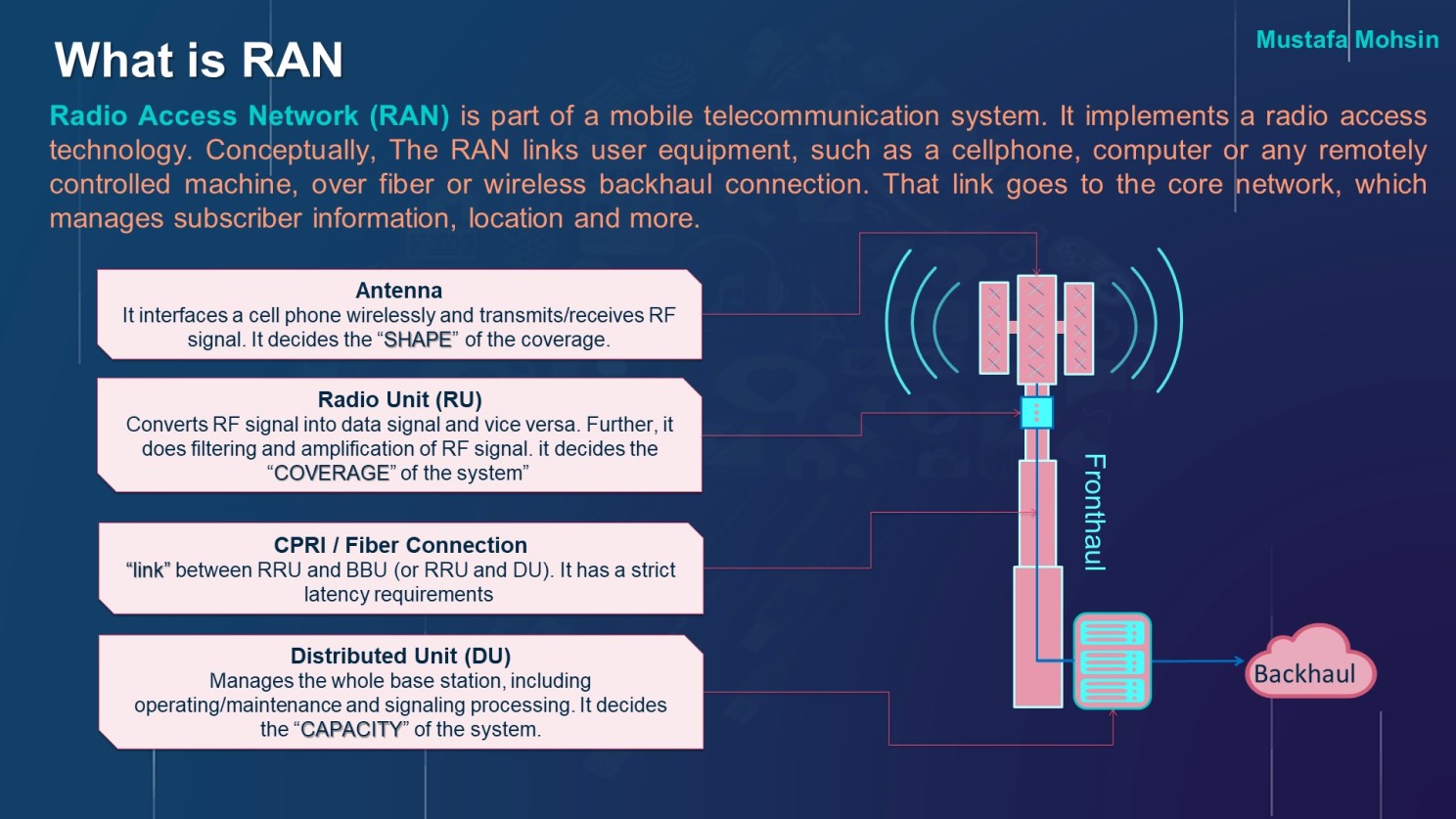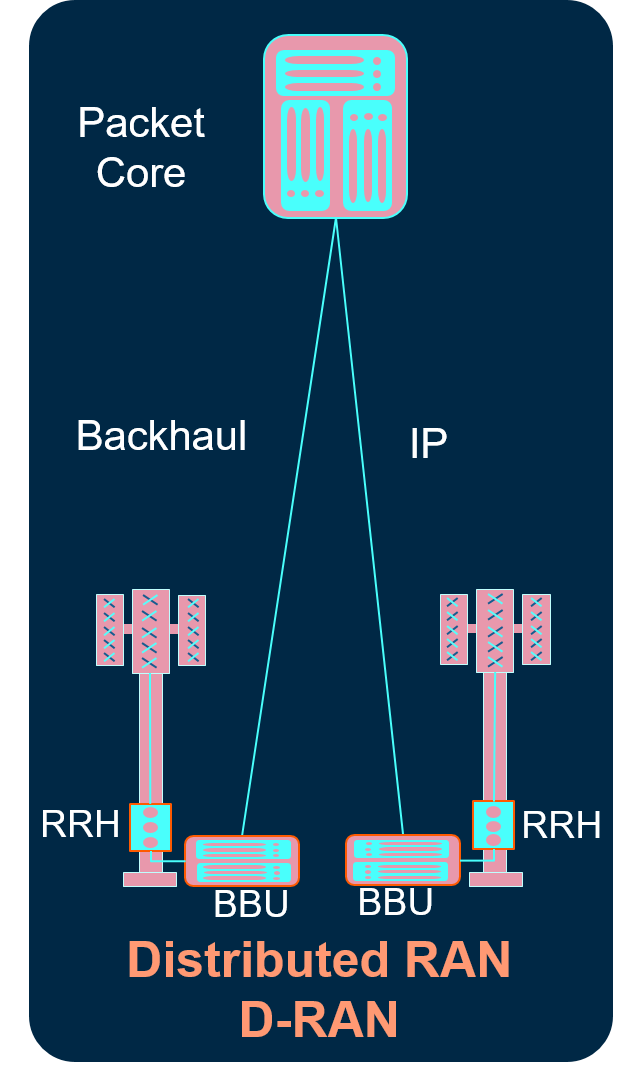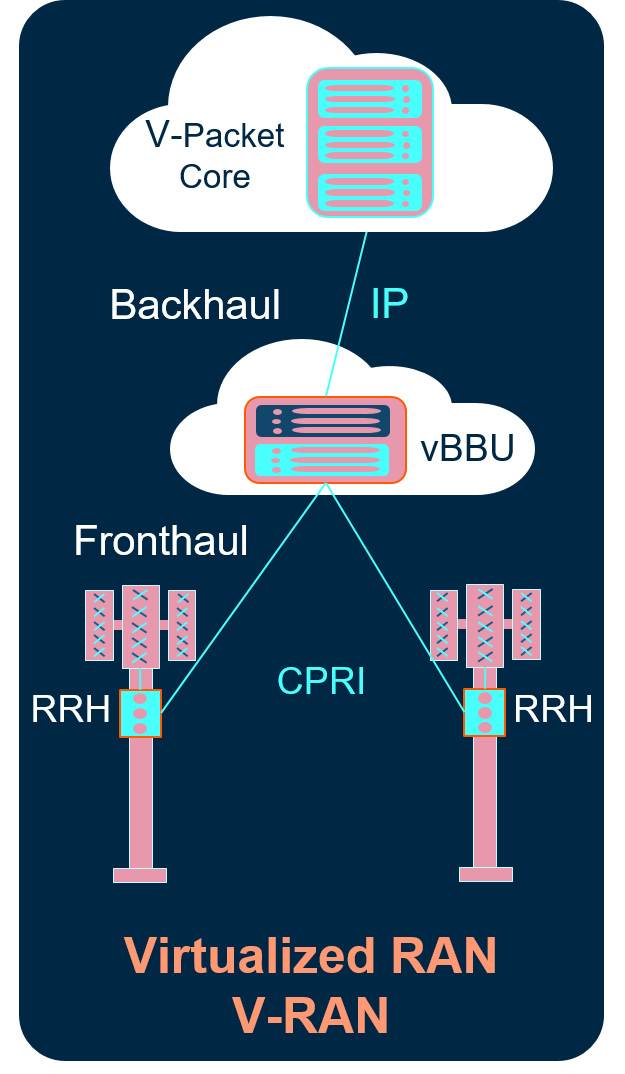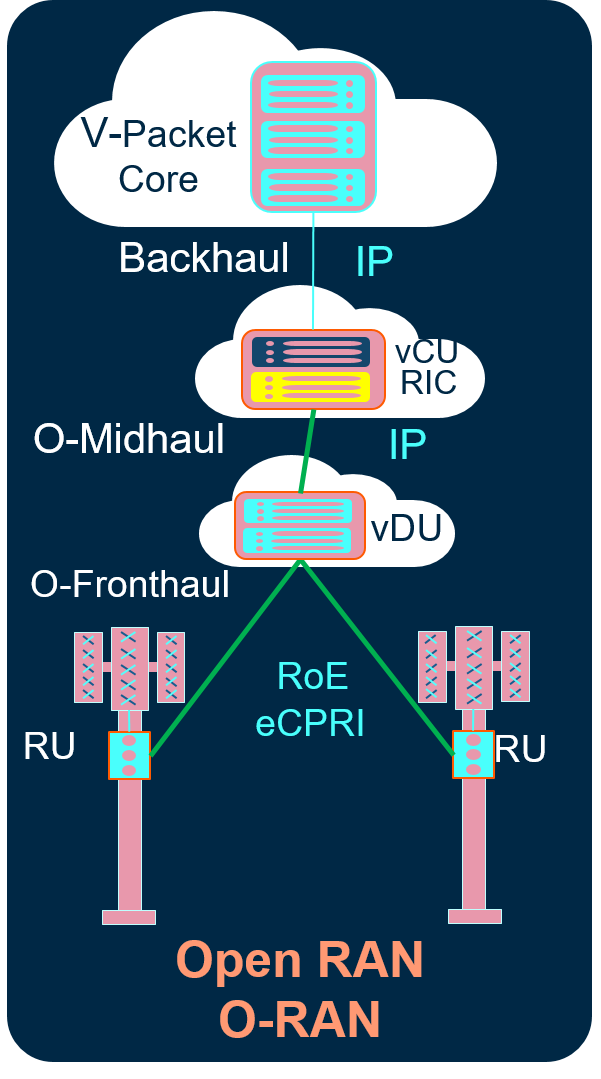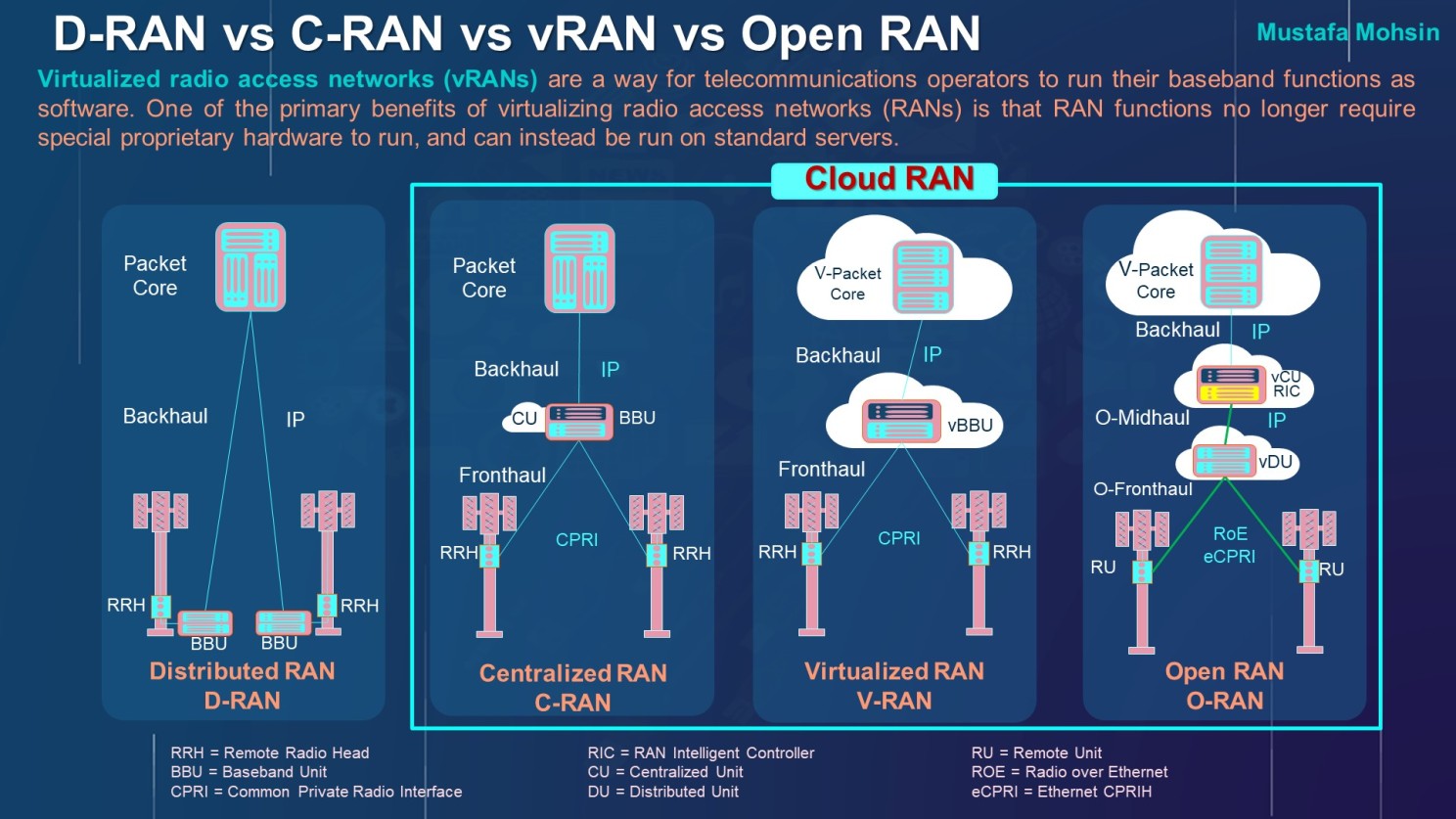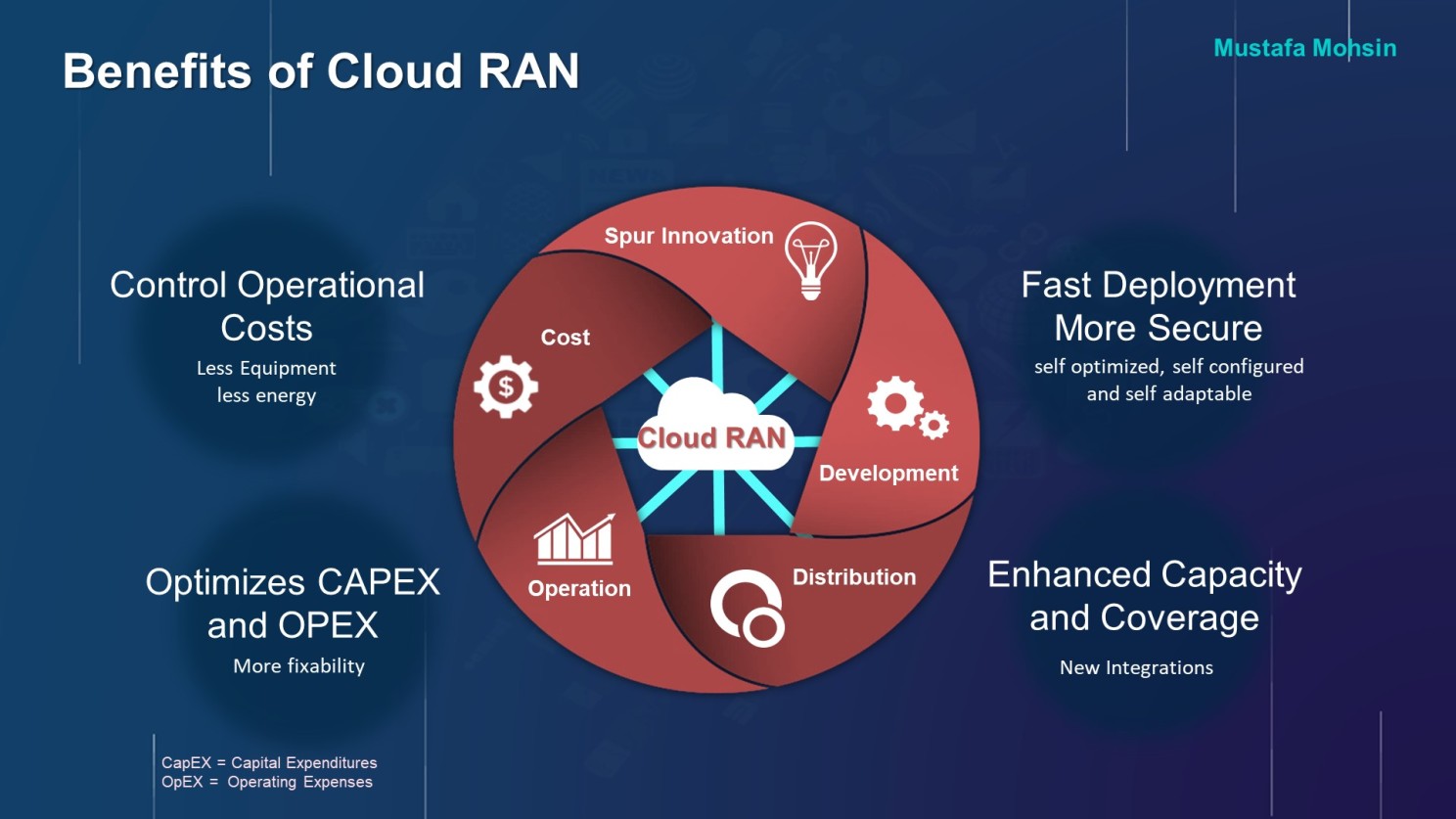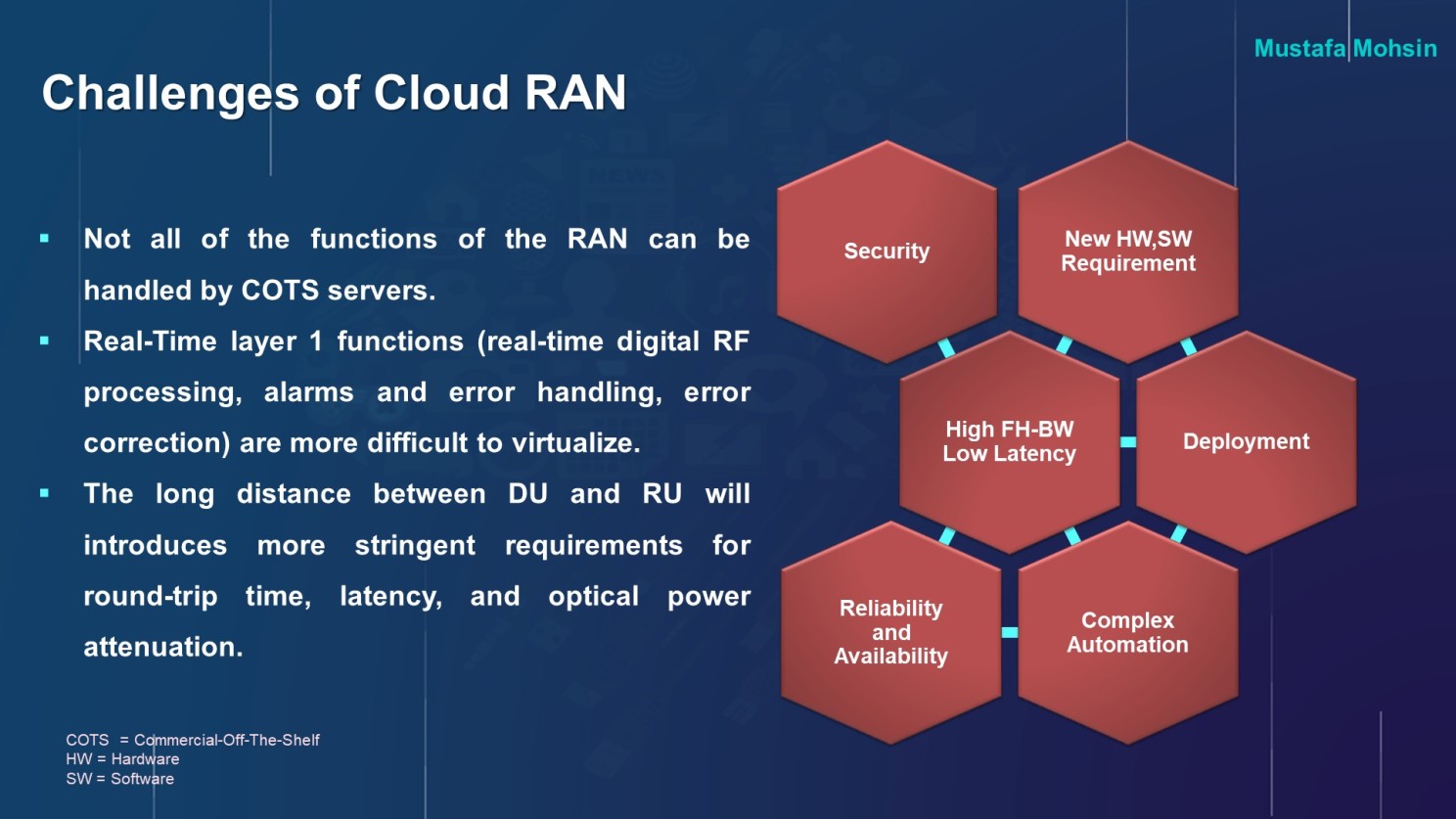D-RAN vs C-RAN vs vRAN vs O-RAN in Radio Access Network (RAN)
This article explains these technologies related to RAN architecture. It will settle the
explanation of these terms once and for all. Comprehending all this will help in understanding a vendor RAN
solution.
Let's start by defining the RAN and asking what is RAN?
Radio Access Network (RAN) is part of a mobile telecommunication system. It implements a
radio access technology. Conceptually, The RAN links user equipment, such as a cellphone, computer or any
remotely controlled machine, over a fibre or wireless backhaul connection. That link goes to the core
network, which manages subscriber information, location and more.
The following graph explains the RAN components:
Radio Access Network has evolved quite a bit, from D-RAN to C-RAN and then to vRAN and now
to the hottest topic in telecom, which is Open RAN, so you need to be aware of all these new terms.
RAN stands for “Distributed RAN”, The RRU and BBU are located at every cell
site. Each cell site with all its radio functions is spread and connected back to the core
network through backhaul. The D-RAN included the following:
BBU: Baseband unit which decides the “CAPACITY” of the system and manages the
BTS (base station), including operating/maintenance and signalling processing.
RRU: Remote Radio unit which decides the “COVERAGE” of the system and
interfaces with an antenna and BBU. It connects to BBU via CPRI interface and converts the RF
signal into a data signal and vice versa. Additionally, it does filtering and amplification of
RF signals.
Antenna: which decides the “SHAPE” of the coverages, interfaces with a cell
phone wirelessly, and transmits/receives RF signals.
C-RAN (Also CRAN) stands for "Centralized RAN", where the BBU moves to a
centralized location, and the cell location only has the antenna and the RRU. This
centralization of BBU functionality (also called BBU pool) results in the term centralized RAN
or C-RAN.
Fronthaul becomes a new interface between the RRU and BBU. The benefits of C-RAN includes CAPEX
and OPEX reduction as deployment and maintenance cost per cell site are decreased because of the
centralization of BBUs . In obtainment, it improves spectral efficiency and reduces
inter-channel interferences, as centralized BBUs can share the resources dynamically among the
multiple RRUs. The inter-channel interference is diminished because of the joint scheduling and
processing.
Midhaul: is the link between DU and CU. Midhaul has flexible latency
requirements, so we can place CU closer to the core node.
CU: Centralized Unit handles the RRC and PDCP layers (and SDAP in the case of
5G). One CU can connect to multiple DUs, and CU can be co-located with DU or far from DU.
DU: Distributed runs the RLC, MAC, and parts of the PHY layer. We usually place
DU closer to RRU.
Fronthaul: Fronthaul: is the link between RRU and BBU (or RRU and DU). It has a
strict latency condition of 100 to 250 µs (one way)
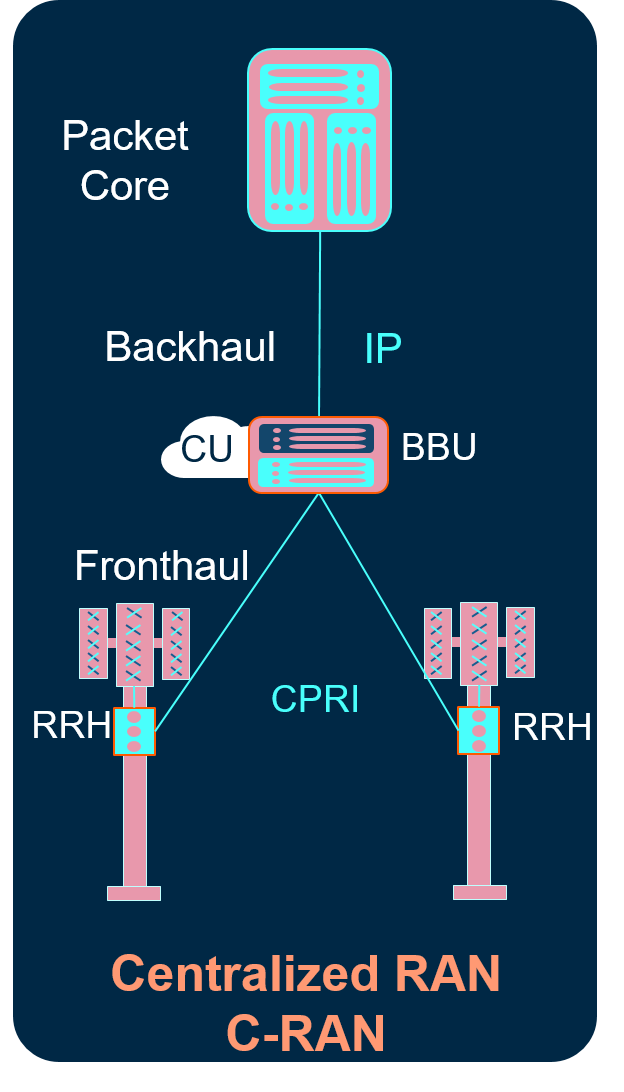
vRAN stands for "virtualizing RAN",in fact, a type of C-RAN. It uses
virtualization technologies such as NFV or receptacles to deploy CU and DU over the x86 server.
(or virtual BBU on a server). There is no difference between vRAN and C-RAN except that
traditionally C-RAN uses proprietary hardware while vRAN uses Network Functions on the server
platform.
Because of vRAN HW/SW decoupling flexibility, we can gain scalability. This can decrease
hardware costs and application agility as the application can be upgraded easily or swapped
altogether (which is not more manageable with traditional hardware). However, vRAN puts servers
to new boundaries because of the performance anticipation. There has been quite an innovation in
improving the server platform to fulfil the performance needs of vRAN.
O-RAN stand for "Open RAN", (from the O-RAN alliance) As we explained, the vRAN
is a proprietary network, as RU, DU and CU, all of the RAN components must be from the same
vendor. The O-RAN alliance is working on specifications to open the interface
between RRU and DU and further between DU and CU. which means that a service provider can
combine and compare the components from different vendors without being locked to one vendor for
all these three components, thus resulting in an open RAN network.
the most important to understand is that the Cloud RAN solution is available in C-RAN, VRAN and
O-RAN to avoid miss understanding the cloud RAN solution that can be founded in C-RAN only,
The following graph summarizes the differences:
The cloud RAN introduced many benefits and enchants the RAN:
All the cloud RAN benefits and enchants has come with challenges on RAN.
In the end, I hope this article has given you a brief look and RAN types and implementations solutions
